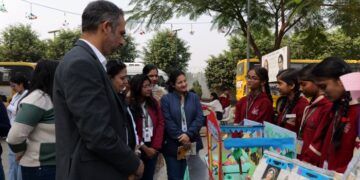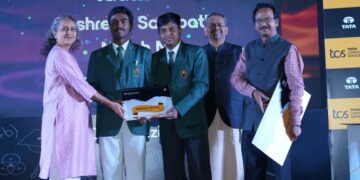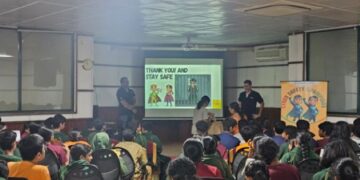Following their partnership MoU recently, Lighthouse Learning, early years and K-12 education group, and Huron University, Ontario, brought the ‘Huron Innovator Academy’ for the first time in India. Huron Innovator Academy is a real world and project-based learning practice by HU.
Billabong High International School, Mumbai, a part of the Lighthouse Learning Group hosted the event at their Mulund Admissions Office last month over three days.
As part of the Huron Innovator Academy, the participating IGCSE students from grades 10 to 12 innovated ideas to solve challenges such as socio-economic opportunities for learners and addressing nutritional requirements for learners to optimise learning, among others.
As part of the Huron Innovator Academy, the participating IGCSE students from grades 10 to 12, the IGCSE students from Billabong High International and Centre Point Schools International, Nagpur students together made innovative solutions to six challenge statements, each tailored to address specific social challenges. These challenges such as socio-economic opportunities for learners and addressing nutritional requirements for learners to optimise learning etc., were set in collaboration with the leaders of Akanksha Foundation, an NGO located in Mumbai, aimed to address their on-ground challenges. The problem statements presented to the students to innovate on included decreasing literacy gaps, creating an inclusive space in school, improving socio-economic opportunities for learners, etc. Students applied the principles of design thinking to develop innovative and practical solutions for their assigned challenge statements. They were specifically tasked with designing low-cost or no-cost solutions for the NGO that relies on partnerships and fundraising.
The two winning teams comprising Durga Adesara (BHIS Juhu), Ishan Ingole (CPSI), Nishita Vaswani (BHIS Mulund), Vizain Vishal Minda (BHIS Malad), Vedika Kanwar (BHIS Malad), Anaaya Sahni (BHIS Juhu), Kaashvi Raghuvanshi (BHIS Juhu), Hamza Godil (BHIS Juhu), and Ridhiman Agrawal (CPSI), were assigned with the challenge statement ‘How do we improve socio-economic opportunities for the learners,’ and ‘How do we address the nutritional requirements of learners to optimise learning’ respectively. The winners were presented $29000 (CAD) worth scholarships from Huron University. This scholarship fund can be utilised towards their tuition fees at Huron University, and the scholarship letter, provided along with the certificate and digital badge.
Matt Bazely, Director of Huron’s Entrepreneurship and Social Innovation division, an accomplished professional in entrepreneurship and social innovation, Dr. Natasha Mehta, Head of Academic Research & Development, Lighthouse Learning and stakeholders enabling social change from the NGO Partner – Akanksha Foundation were part of a workshop that set the context and tools for the work by these students.
Matt Bazely, Director, Huron’s Entrepreneurship and Social Innovation, added, “It was a privilege to lead the sessions of this program at Billabong High International School. Witnessing the students’ exceptional dedication and growth in collaborative thinking skills has been truly gratifying. This programme epitomises the transformative potential of innovative education in shaping aspiring leaders, equipping them with the necessary skills to drive meaningful change. The experiences gained by the students during this program will help propel them towards a future filled with success and enable them to make a lasting impact for the society.”
Commenting on the students’ achievement, Dr Natasha Mehta, Head of Academic Research & Development, Lighthouse Learning, said, “Today more than ever, our students must be exposed to real world skills such as critical thinking and creative problem solving. Real-world application and project based learning enables students to immerse themselves and understand these concepts better. Through the 1st ever Huron Innovator Academy in collaboration with Huron University, Billabong High International School was able to lead students into engaging discussions, identifying problem statements and mentoring them as they came up with solutions, suggestions and roadmaps to solve these problems. The engagement was especially meaningful for the students, since it helped build empathy in them. Students employed the principles of Design Thinking to suggest practical solutions which were both unique and innovative. I am amazed to see the concepts, suggestions and ideas that the team of students presented.”














